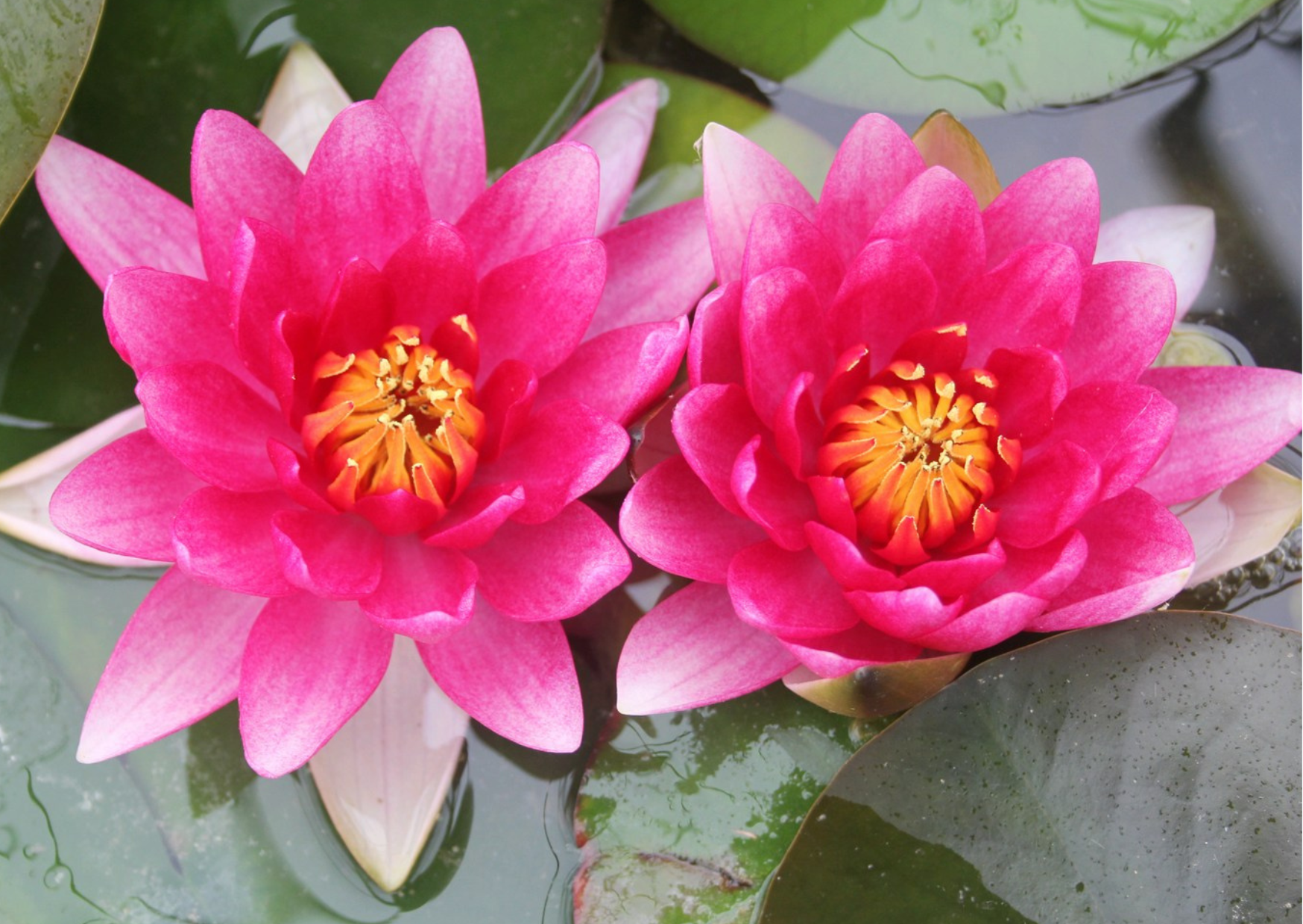Next working day delivery with Royal Mail Tracked 24
Pond Plants Classification Explained | Different Types

Pond Plants Classification Explained | Different Types
There are lots of different types of pond plant to choose from, many serving practical purposes in the pond, while others are simply for pure aesthetics.
This handy guide below will outline the different types of pond plants you can buy to adorn your garden pond.
Marginal & Damp Ground Pond Plants
Marginal plants can be placed in shallow areas of a pond and around the borders where damp, which makes them perfect for a bog water garden too. You will find these listed with the description of "marginal" and a minimum depth of 0cm. Marginal pond plants are great for attracting pollinating insects.
Examples of Marginal & Damp Ground Pond Plants include: Acorus varieties, Caltha, Carex and Iris varieties.
Pond Oxygenators
Pond oxygenators are plants that typically absorb more carbon dioxide from the water than they release. They are particularly good at absorbing nitrate and can be key to a healthy pond environment for wildlife. Oxygenating pond plants have different requirements, we sell them in different formats, in containers, bunches, tubs or planted in gravel depending on the species.
Examples of pond oxygenators include: Eldoea, Eleocharis, Hottonia, and Myriophyllum varieties.
Deep Water Pond Plants
Deep water pond plants are for the deeper areas of the pond to give leaf cover and shade to the water. An excellent addition to lilies, they are more tolerant of shade and moving water but equally good at providing surface cover, helping to keep the water clear.
Aponogeton distachyos complements lilies as it flowers most of the year when lilies are dormant. Nymphoides peltata can make a good addition to any pond, but it can grow fast so may need trimming. Nuphar lutea is the best option for running water as this can grow in fast flowing streams.
Water Lillies
Water lilies are often considered the most attractive of pond plants. We stock the widest range of lilies available in the UK in pot sizes from 1 to 30 litres. Water lilies will continue to grow and provide surface cover in your pond. They are suitable for all pond sizes, but if you have a small pond, cutting back shoots and managing water lilies is a good idea to avoid them taking over the pond.
Plant water lilies in your pond in still water away from constant splashing such as fountains. Lilies grow best in full sun but can tolerate some shade. The leaves of lilies shade the pond providing shelter for fish from predators such as herons. The reduction of sunlight reduces algae growth.
Floating Pond Plants
Floating pond plants are great for encouraging surface insects and other wildlife, providing cover and shade and absorbing nitrate from your pond water. Floating pond plants will gradually grow and spread out across your pond surface.
Floating plants can be sensitive to winter weather and may not always survive the changing seasons. Only native floating plants are truly hardy whilst tropical species add
variety to the pond. All shade the water and remove nitrates, which helps to reduce algae and increase biodiversity.
Examples of Floating Pond Plants: Hydrocharis, Limnobium, Salvinia and Trapa Natans (Water Chestnut - below).
Moisture and Shade Loving
Moisture and shade loving pond plants are often larger marginal plants that are broad-leaved and bold. Flowering plants are great for providing cover for wildlife and pollen for pollinators.
These are excellent for bog gardens or damp areas where the soil does not dry out. Our range includes ferns which tolerate deep shade, gunnera and primulas.
To browse our broad range of pond plants online please click here.
To browse our range of fertilisers and plant food online please click here.
Photo credit(s): Anglo Aquatic Ltd / Canva Pro Licence.










